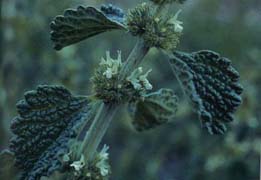Salal
Heath, Heather
Ericaceae
Gaultheria shallon
Salal, Pursh, Oregon Wintergreen, "lemon leaf"
Native American Names:
Kallam: t!a’ka
Makah: sala’xbupt
Quileute: ko’o.d, ku’u’d = plant
ku’u’dpat = berries
Quinault: kwa’soitquu’l =bush
bu’tskitl =leaves
Samish: ta’qa
Skagit: ta”kats = plant
ta’ka = berries
Skokomish: t!a’xka
Snohomish: ta’ka’ats
Swinomish: ta’qu’ts (2)
Related Species: Wintergreen (Gaultheria procumbens), Western Teaberry (Gaultheria ovatifolia), Prickly Heath (Gaultheria mucronata), Snowberry (Gaultheria hispida), Creeping Snowberry (Gaultheria hispidula)
Sitting With:
Spreading anonymously like a lullaby
A little arrogant, sometimes…
Body System Affiliations:
1. Digestive
2. Respiratory
3. Urinary
4. First-Aid
5. Nutritional
6. Pediatrics
Botanical Description:
Habit: Perennial Shrub
Size: 6-7 ft. tall in shady thicket, 1 ft. on roadsides
Arrangement: Alternate
Leaves: oblong to elliptical ovate, acuminate, very finely and sharply toothed,
evergreen, thick, leathery, 1-4 inches long
Flowers: urn-shaped, pink, clusters of 5-15 at top and sides, “typical of Heath
family (1)”
Fruit: flowers mature in late summer into purple-black berries, edible, high in
flavonoids, bland taste, a little spicy, PLENTIFUL
Bark: mealy stems
Twigs: zigzag in new stem growth, red when mature, brown
Underground Parts: “Sprouts profusely from rhizomes (6).”
Personal Observation and Description:
I find the leaves to be most interesting. They are pubescent, and very smooth
like a countertop, they seem to curve and curl at the margin because of their
stiffness. The margin is ever so slightly toothed, almost serrulate-ulate, the tip
being perfectly acuminate. At the base, the leaf is round, sometimes oblique, and
what I think is the node (where the leaf attaches to the branch), is a pleasant
lemonade yellow with a vibrant magenta blotch. The plentiful berries have died
off for the winter, but new buds are already forming (mid-November).
Ecology:
Habitat: moist forest understory- mostly Evergreen and coniferous forests,
coastal mountain areas, also grows on roadsides
Range: Western North America, Santa Cruz, CA to Alaskan Panhandle,
East to Cascades in Washington, stops in Southern Central OR
Native: in Pacific Northwest only (Northern CA to AK, all through BC)
Ecological Relationships: Salal is usually found growing abundantly under
Douglas-fir, Western Hemlock, and Sitka Spruce. Common associates
include salmonberry, vine maple, western sword fern, and California
hazel.
Personal Observation: Salal is an abundant plant in the Pacific Northwest, which
seems to take up, and comprise much of the forest floor. It seems that
Salal prefers to grow around the base of large trees, basking in their shade
and spreading outward. I have begun to recognize Salal as the “green that
exists under the trees” around the Pacific Northwest, especially around
the Olympic peninsula area. I have not noticed much of a variation in
plant size or shape within this area.
Westhttp://www.bcadventure.com/adventure/wilderness/wildflowers/salal.htm [1]. Interactive Broadcasting Corporation, 1996-2006.
6.) www.cnr.vt.edu/dendro/dendrology/syllabus/gshallon.htm [2]. Seiler, John R., et al. Virginia Forestry Department, 2005-2006.
7.) http://www.fs.fed.us/database/feis/plants/index.html [3]. USDA Forest Service. 2006.
8.) Turner, Nancy J. Food Plants of Coastal First Peoples. Vancouver: University of British Columbia, 1971.
9.) Alaback, Paul et al.
Plants of the Pacific Northwest Coast: Washington, Oregon, British Columbia & Alaska. Eds. Jim Pojar and Andy MacKinnonn. Revised Edition. Vancouver, British Columbia: Lone Pine, 1994. p. 53.
Meghan McNealy – Healing Gardens – Fall 2006
